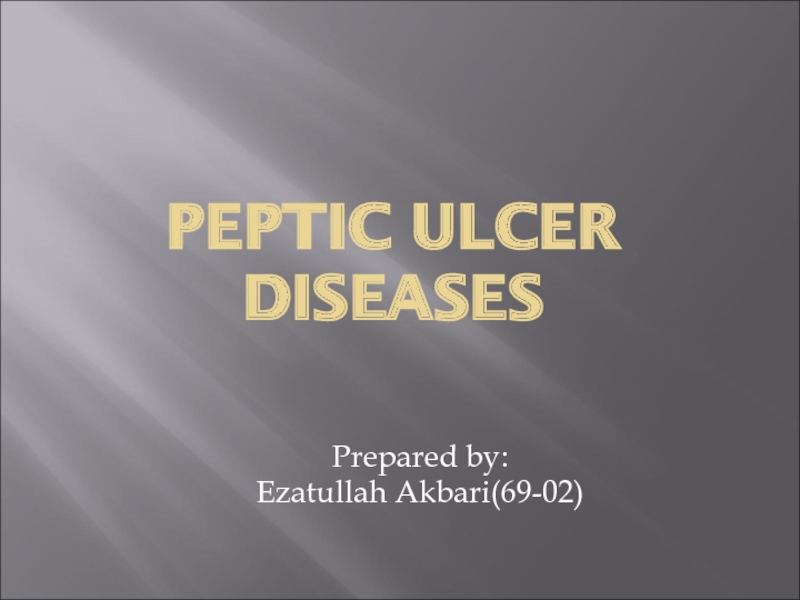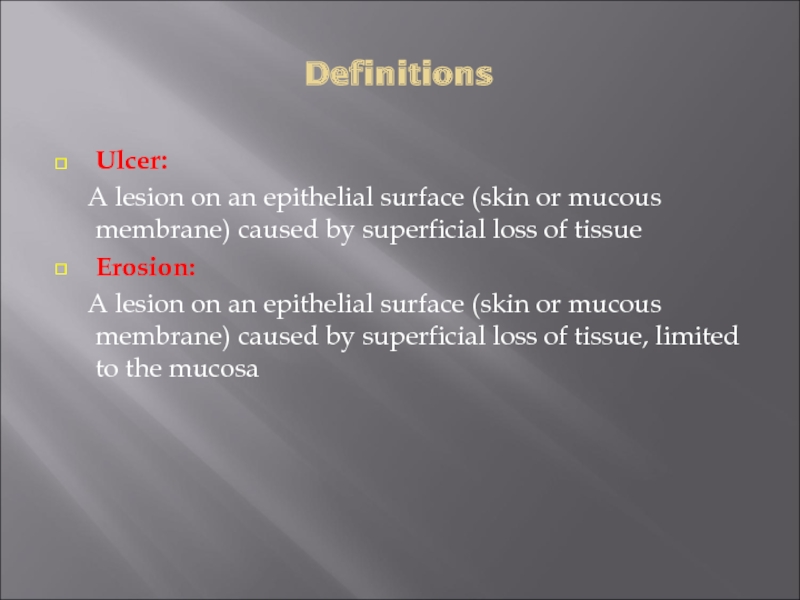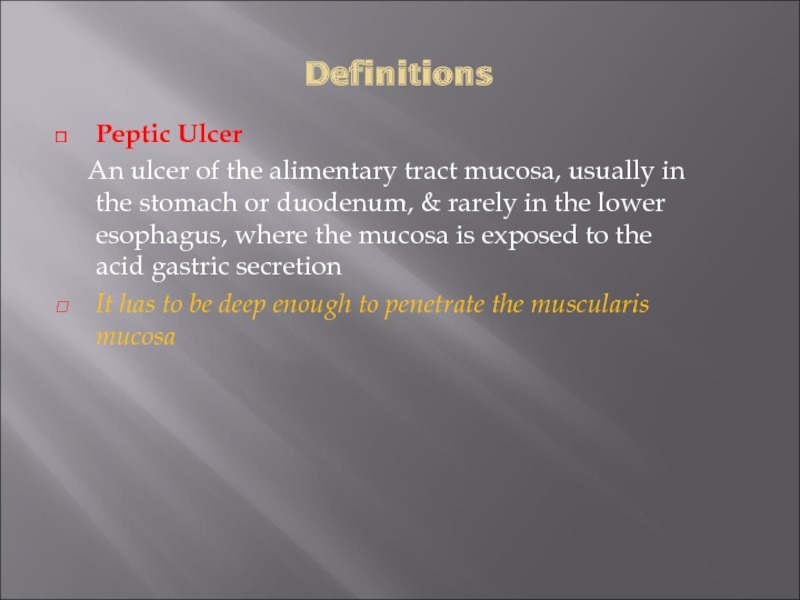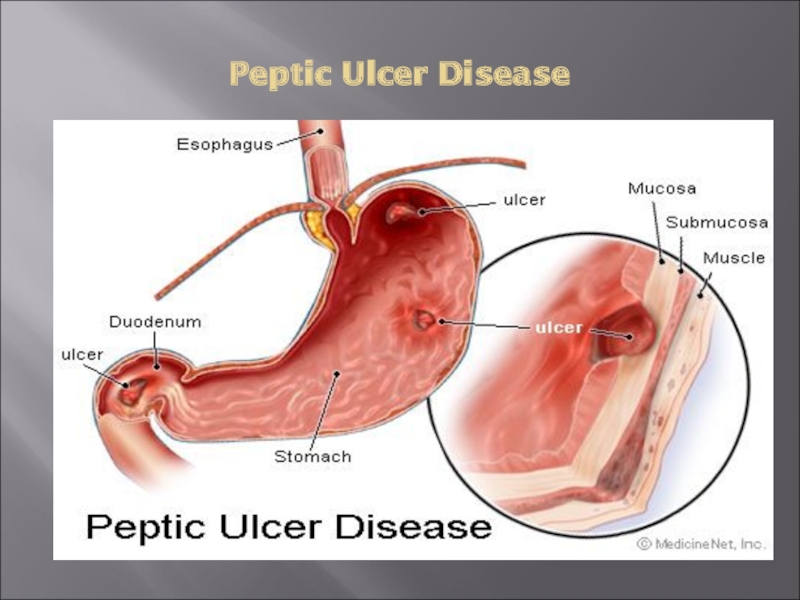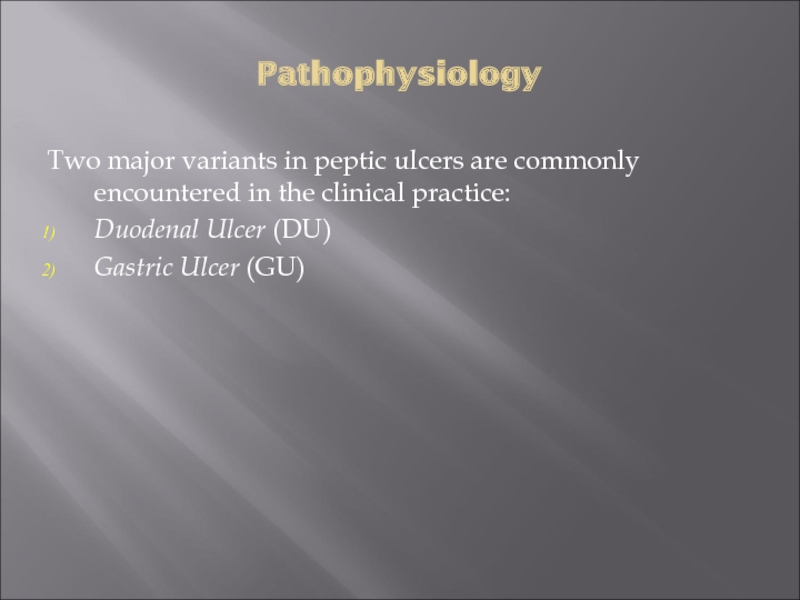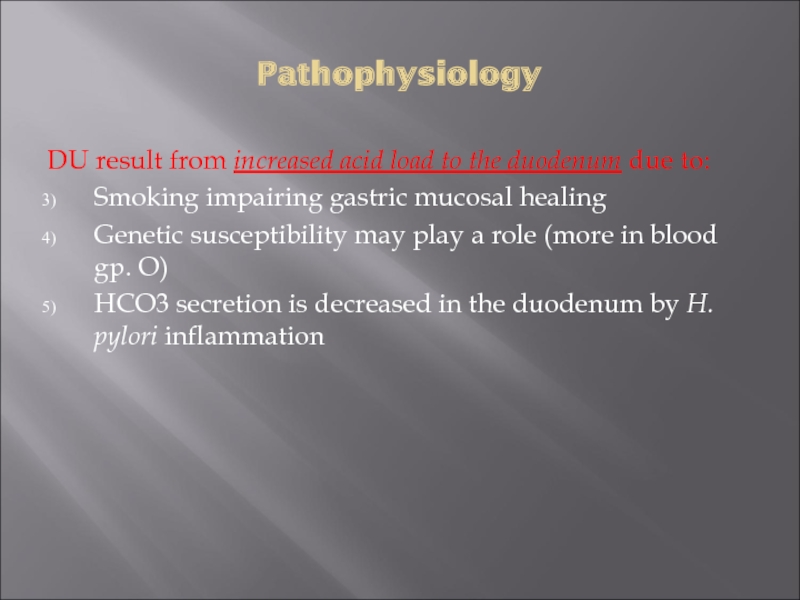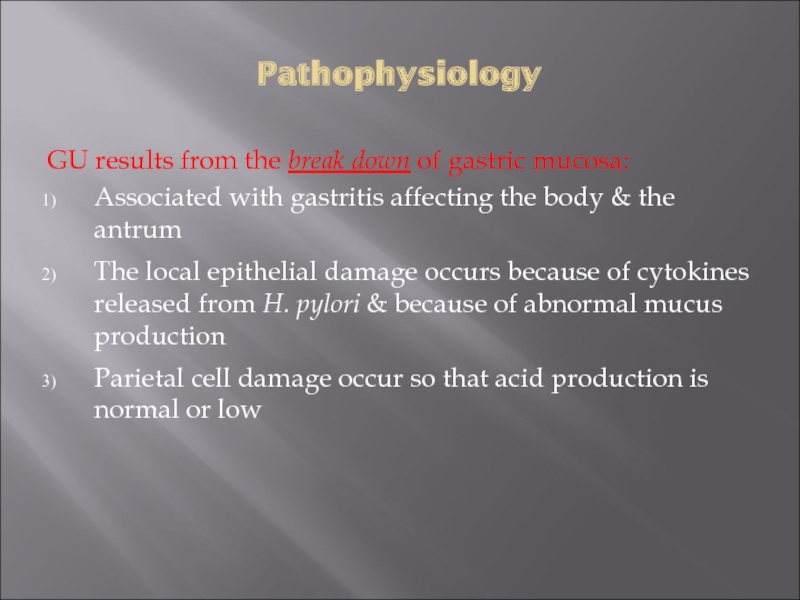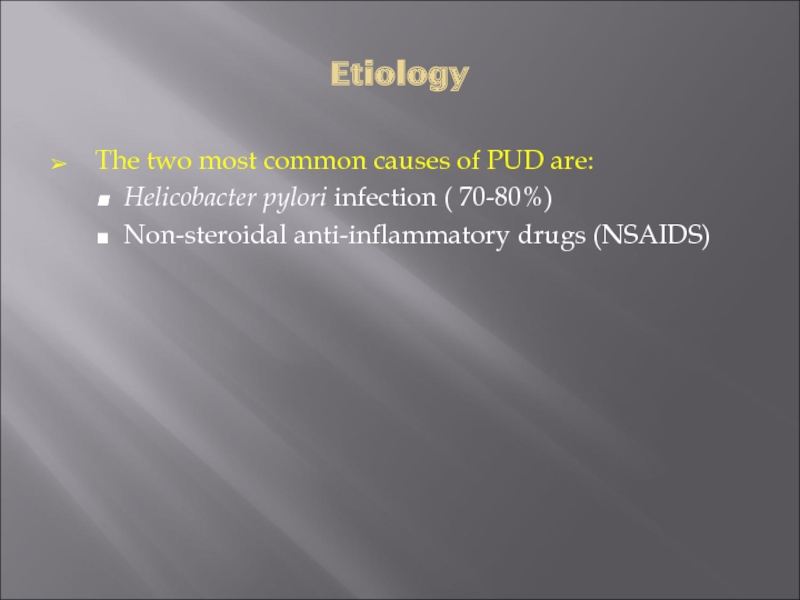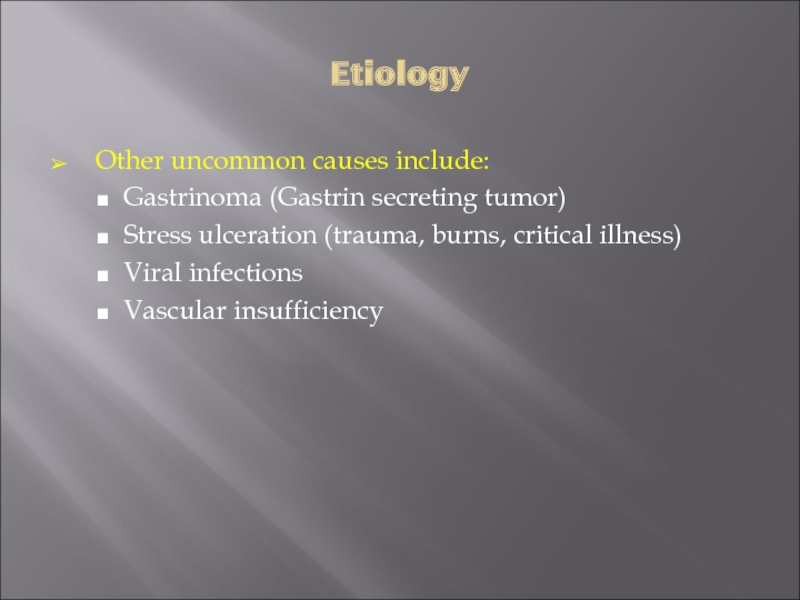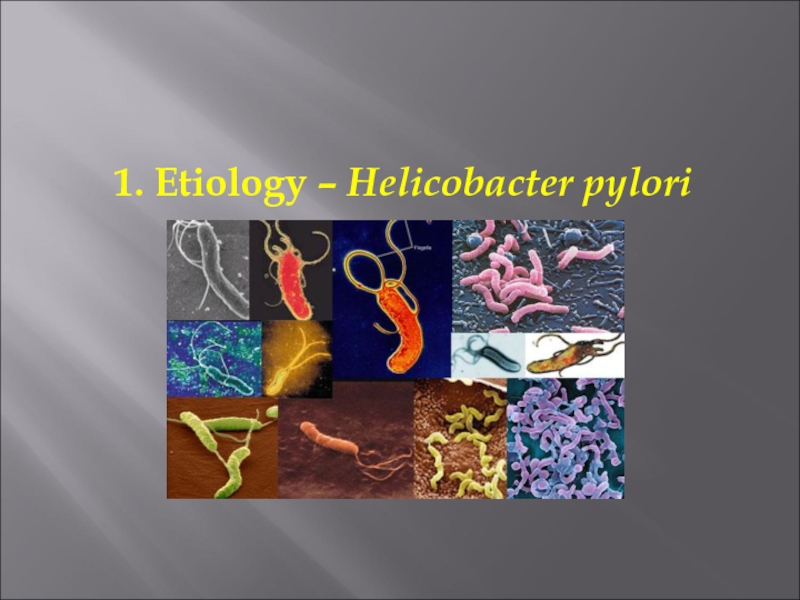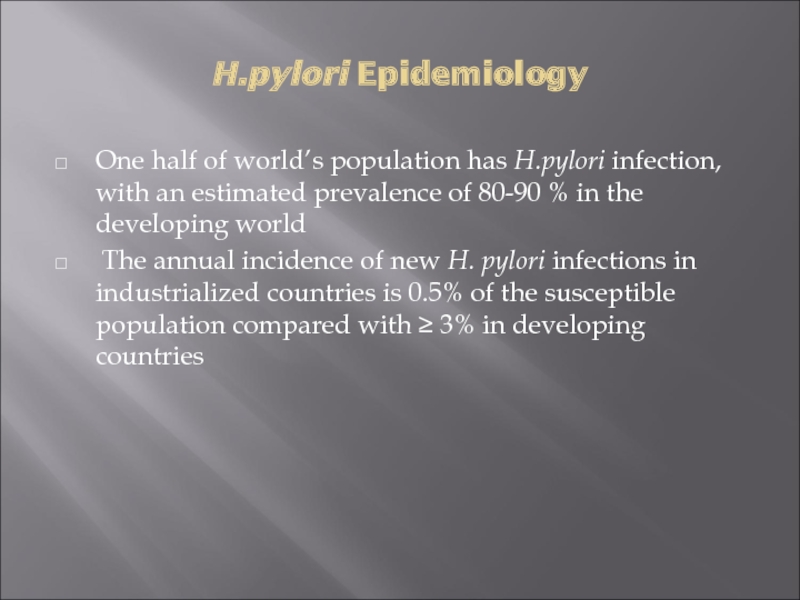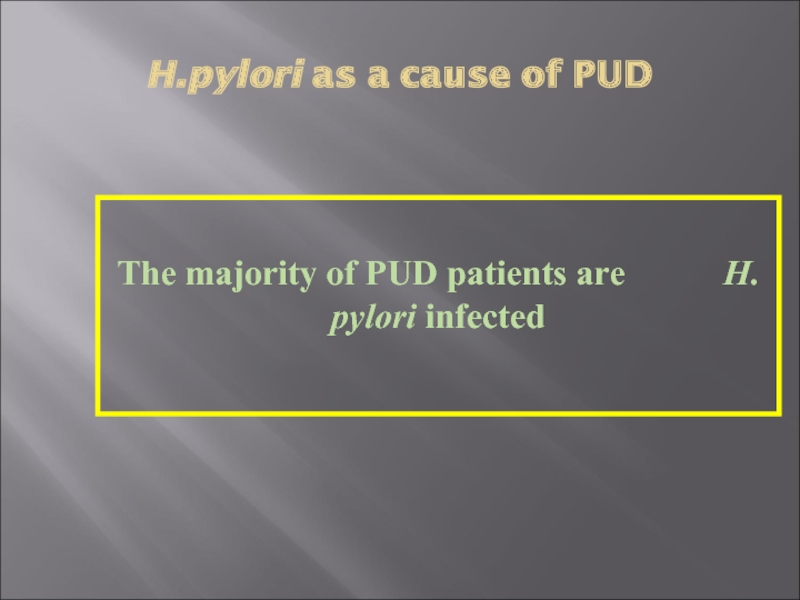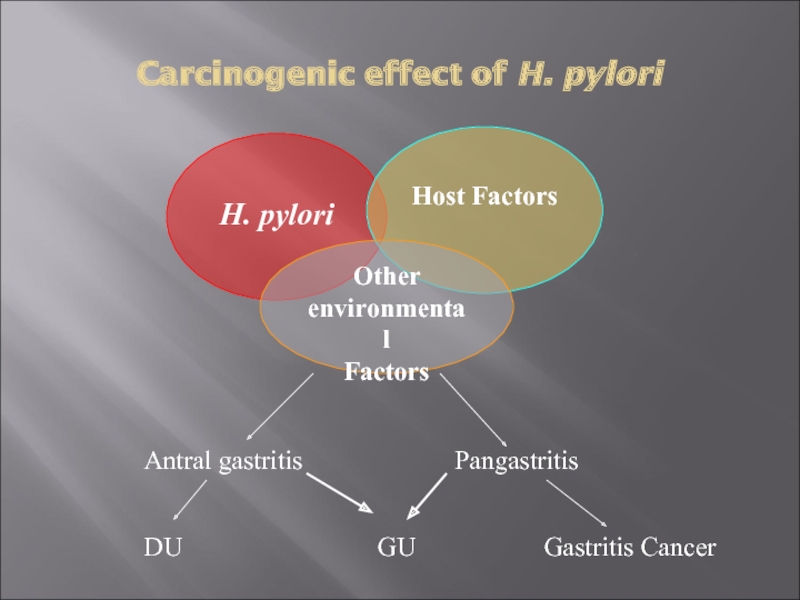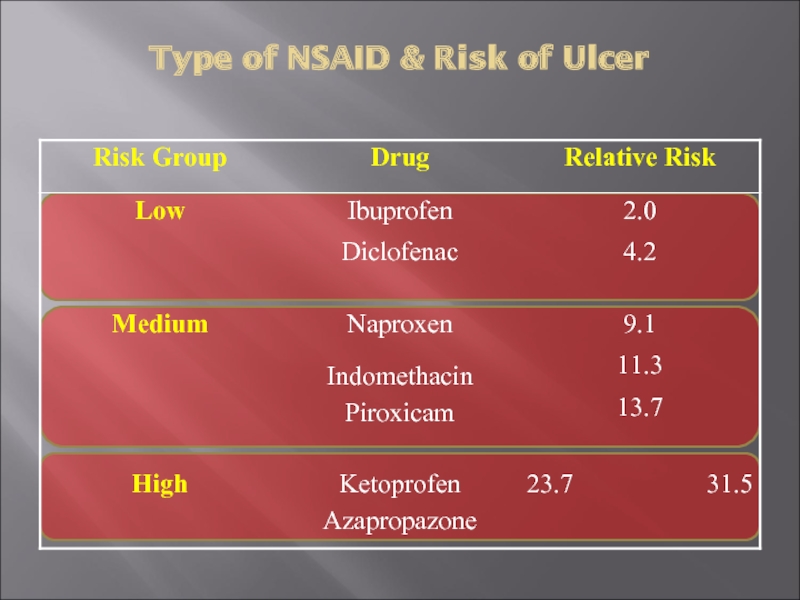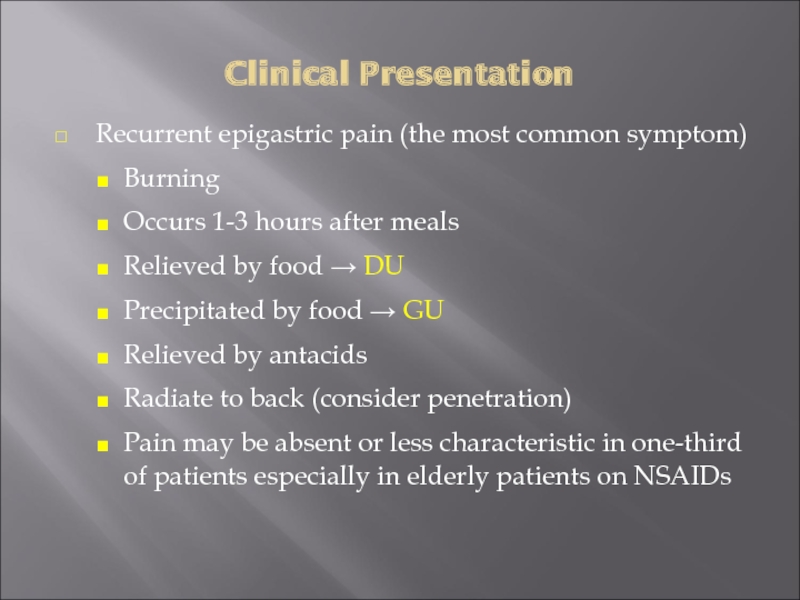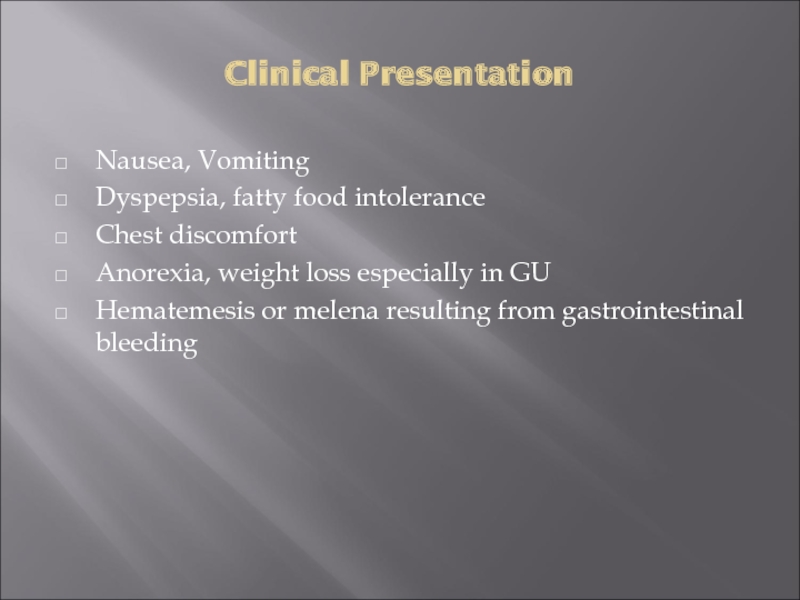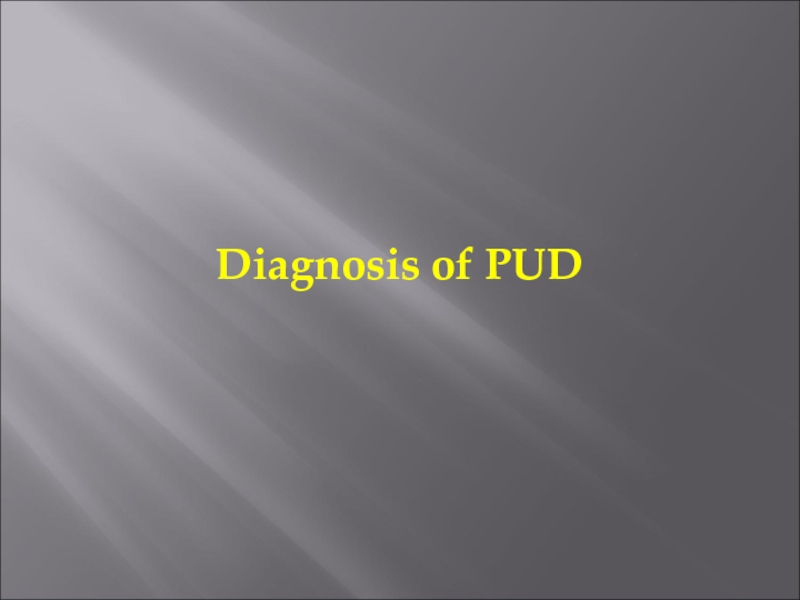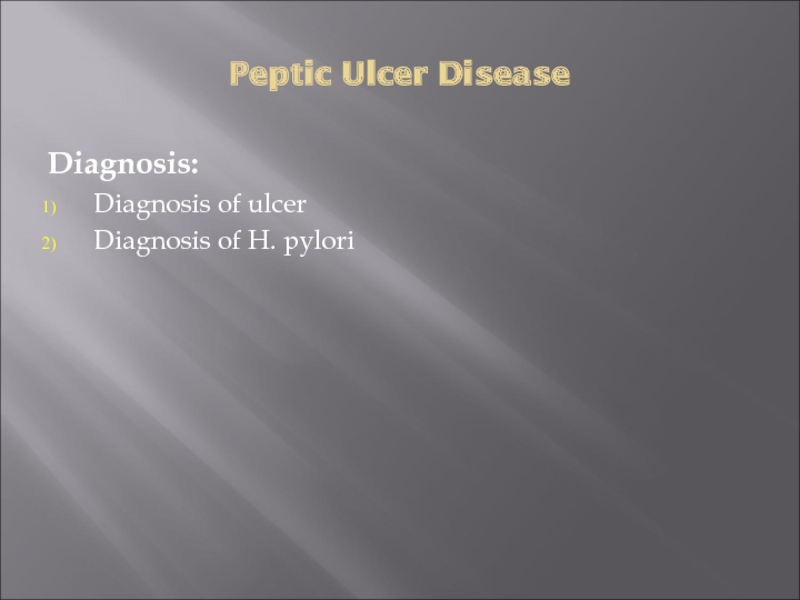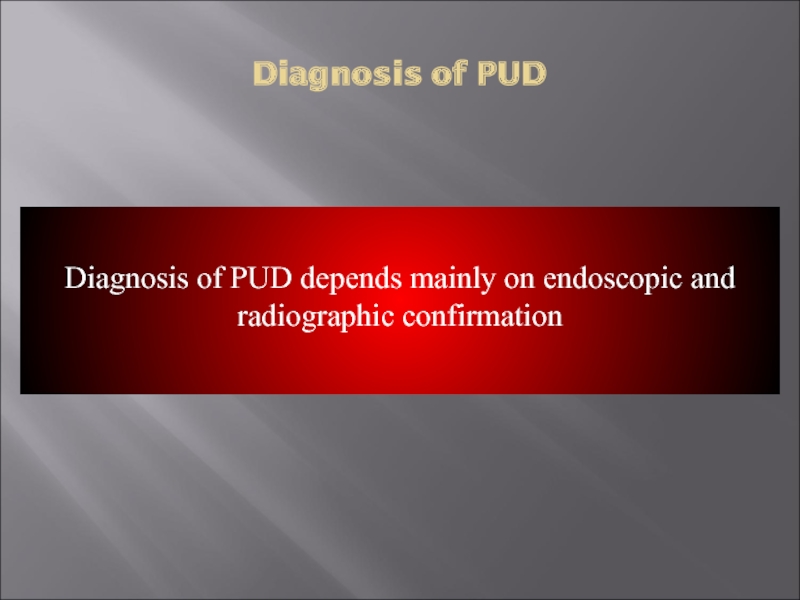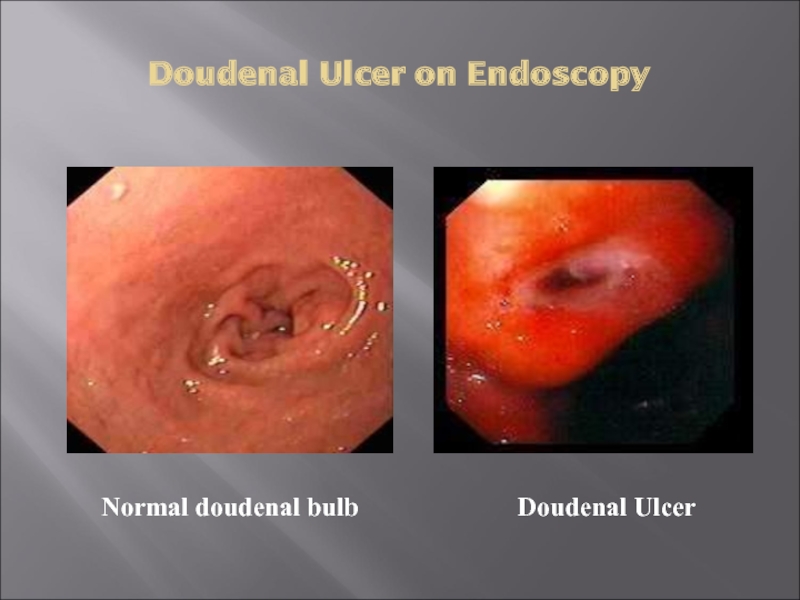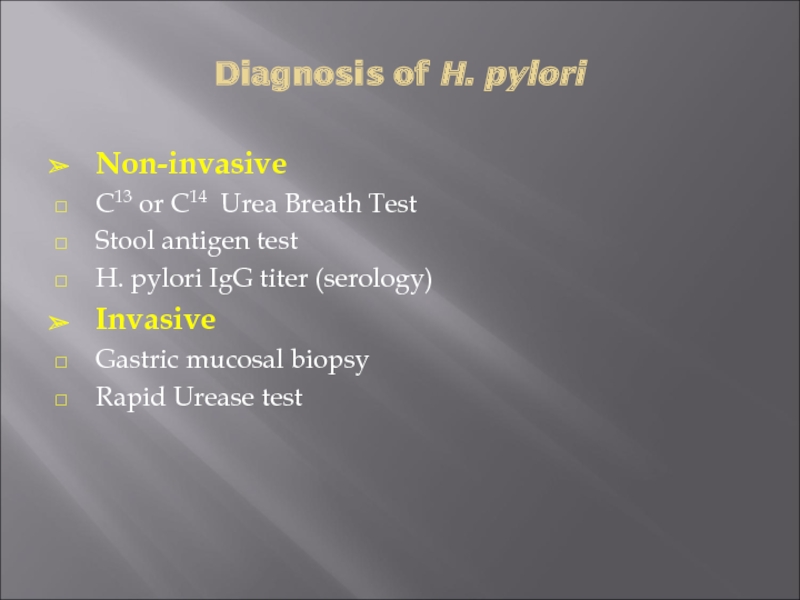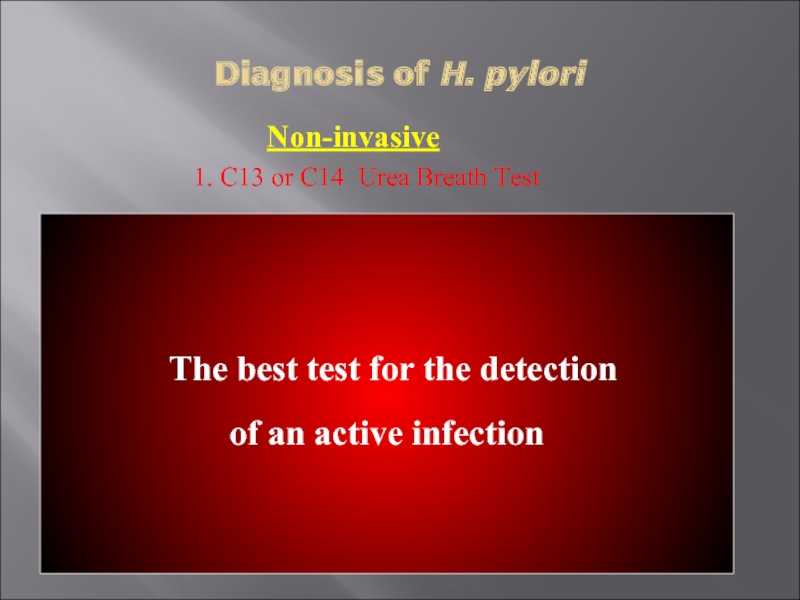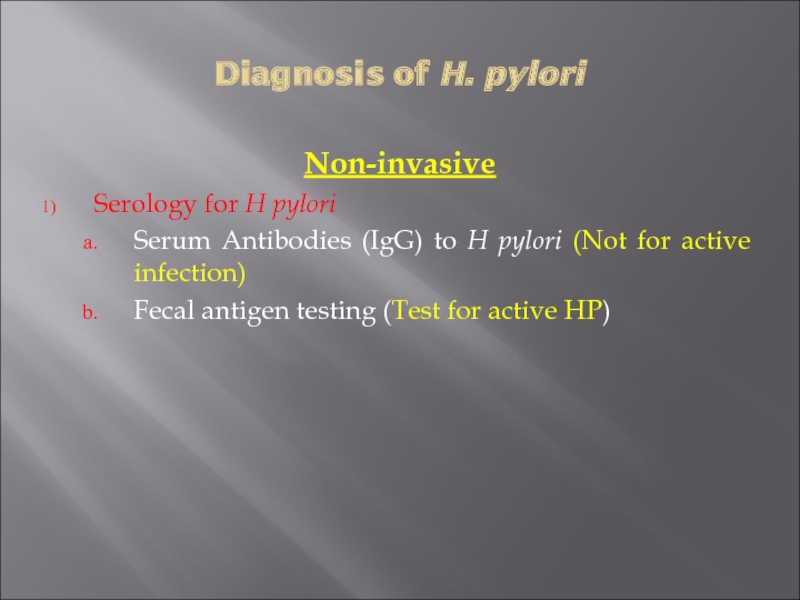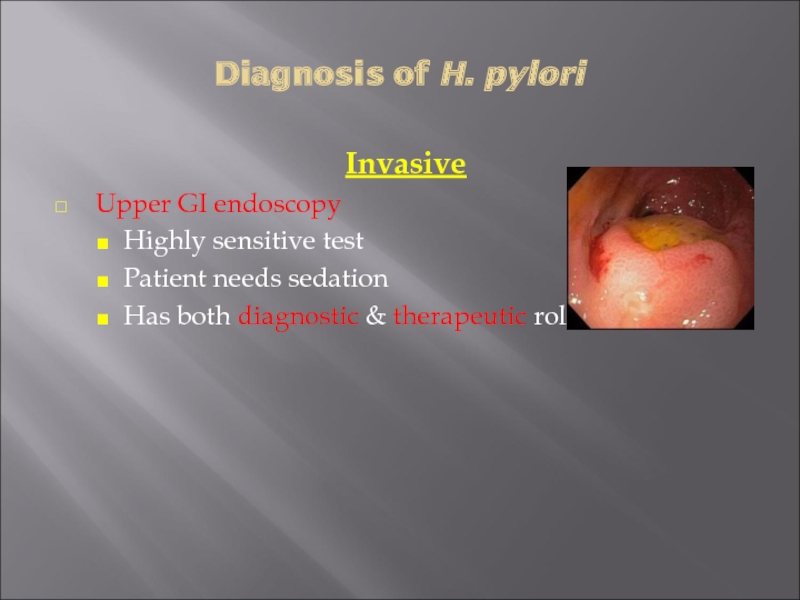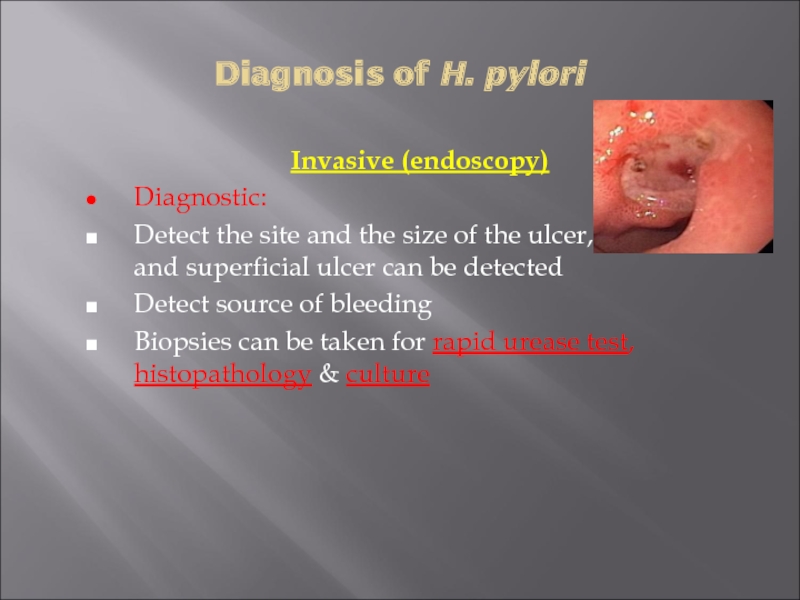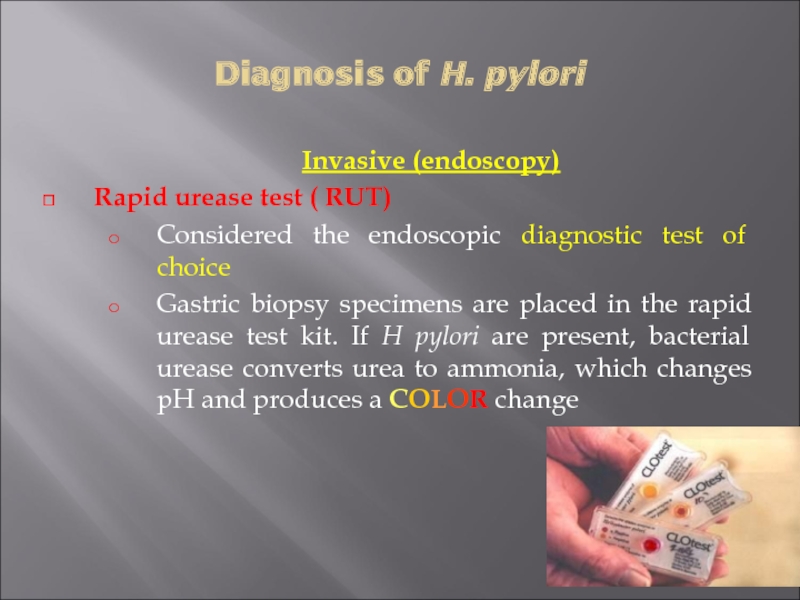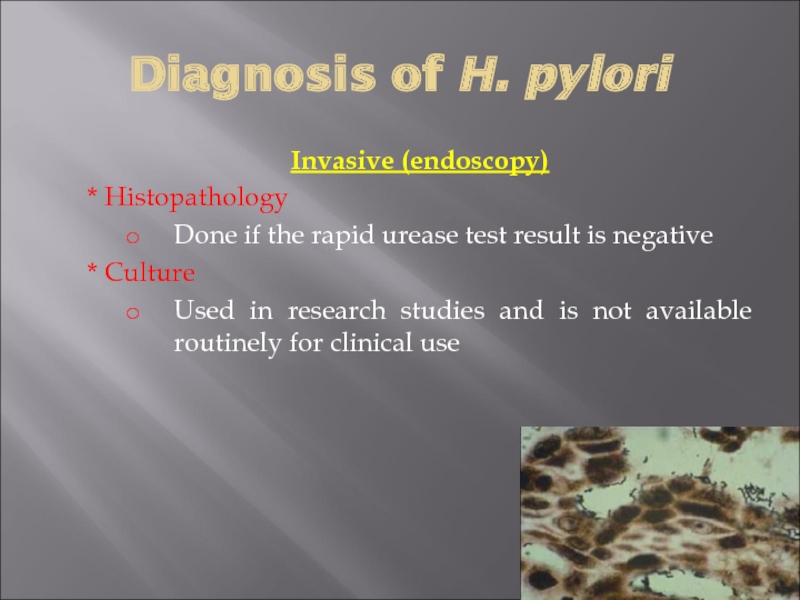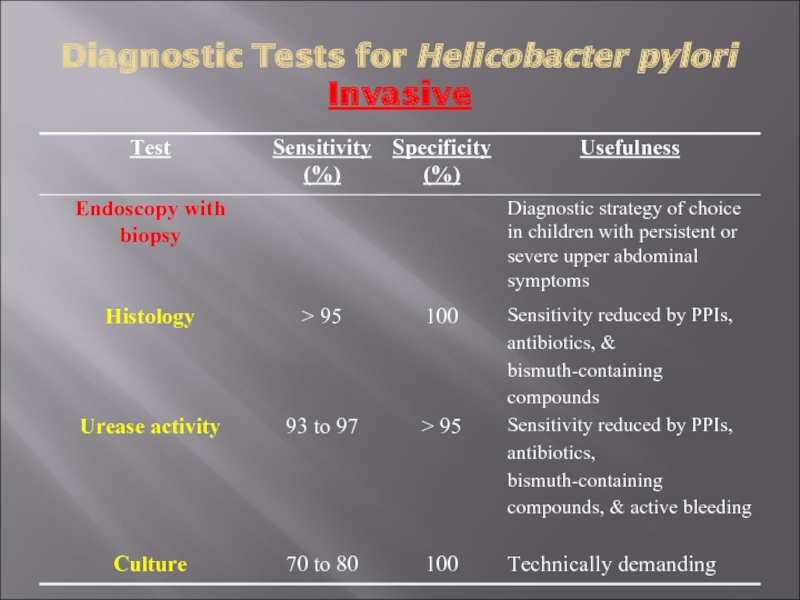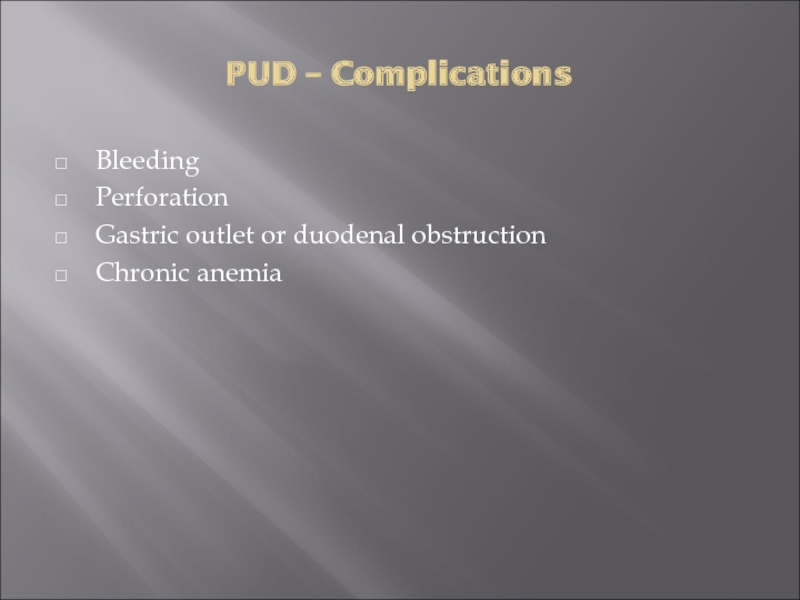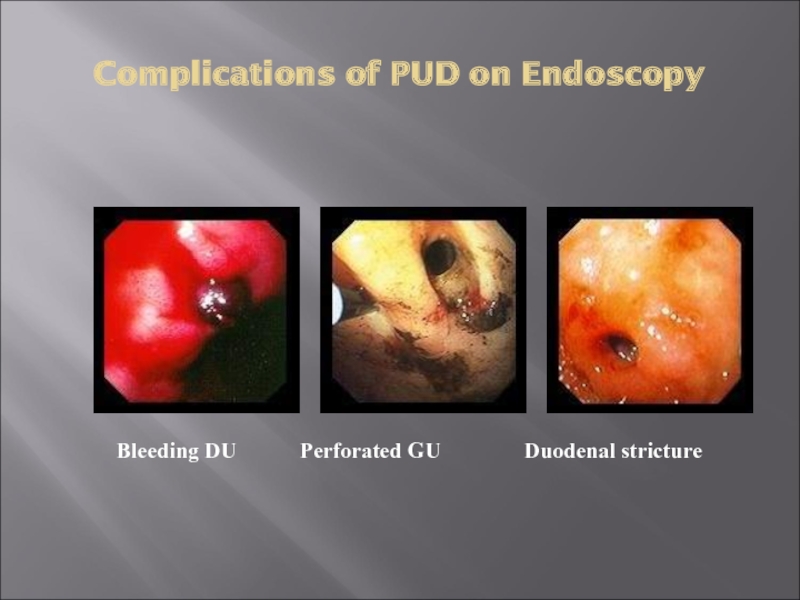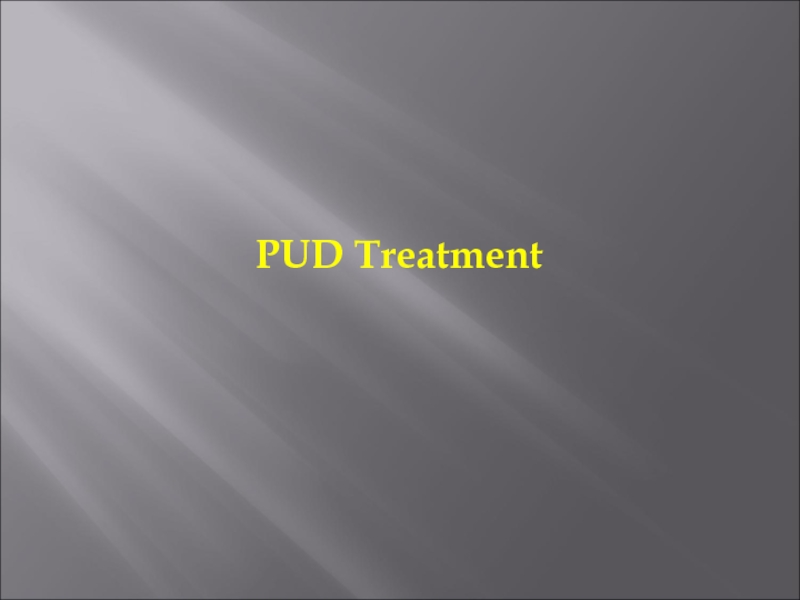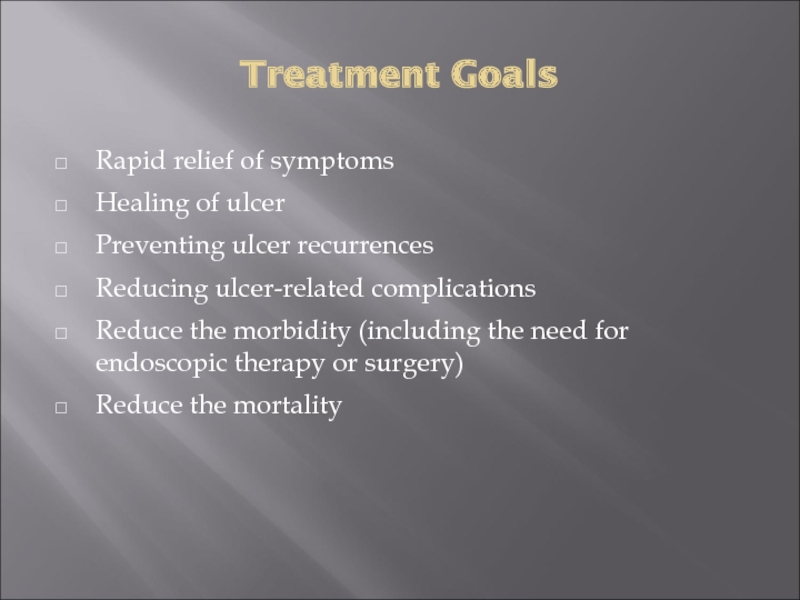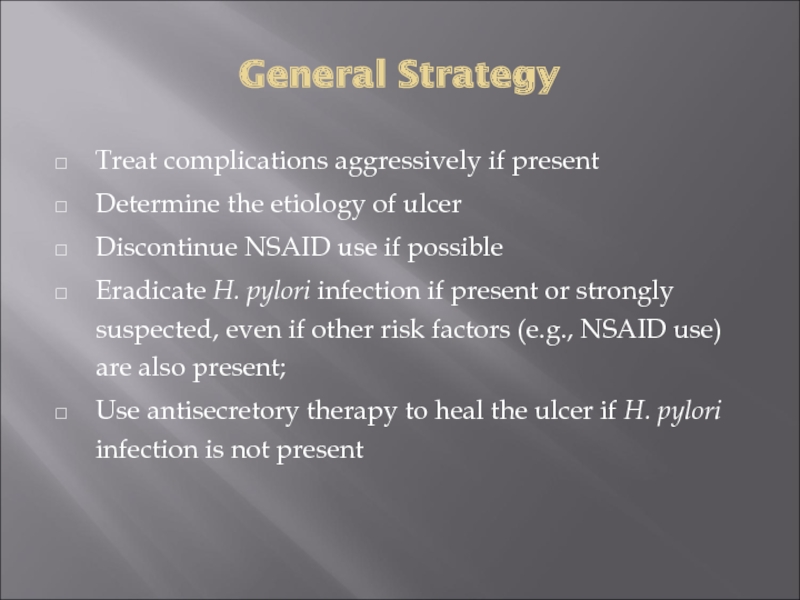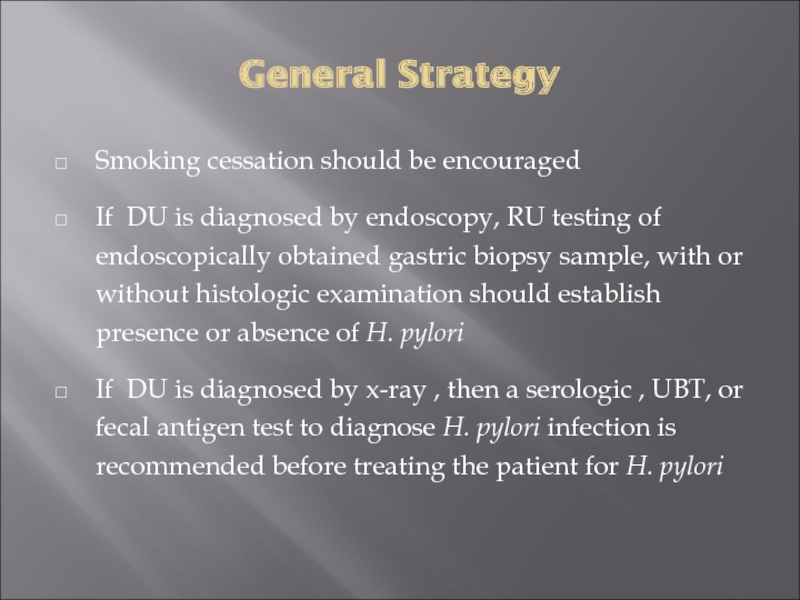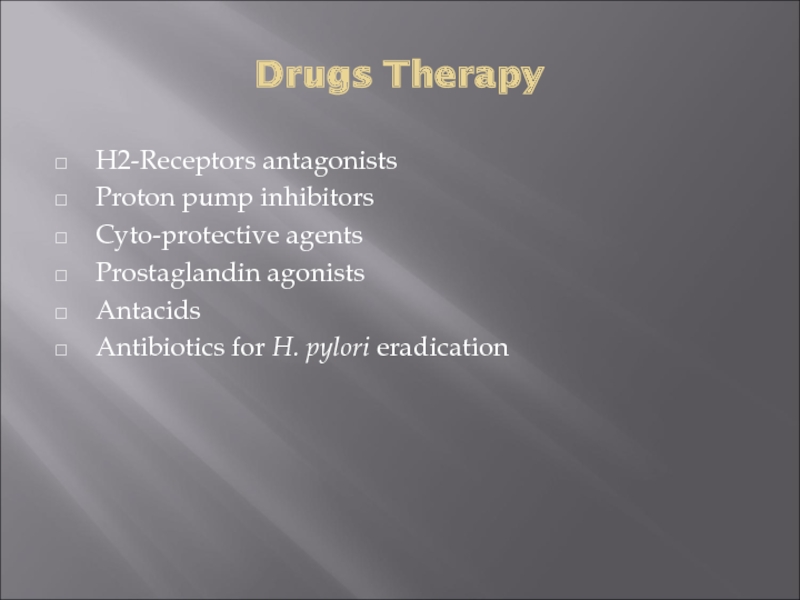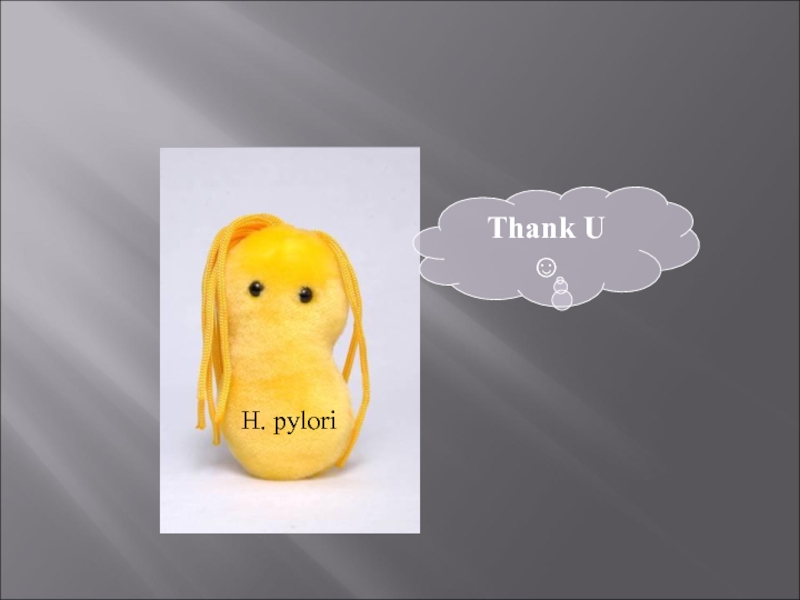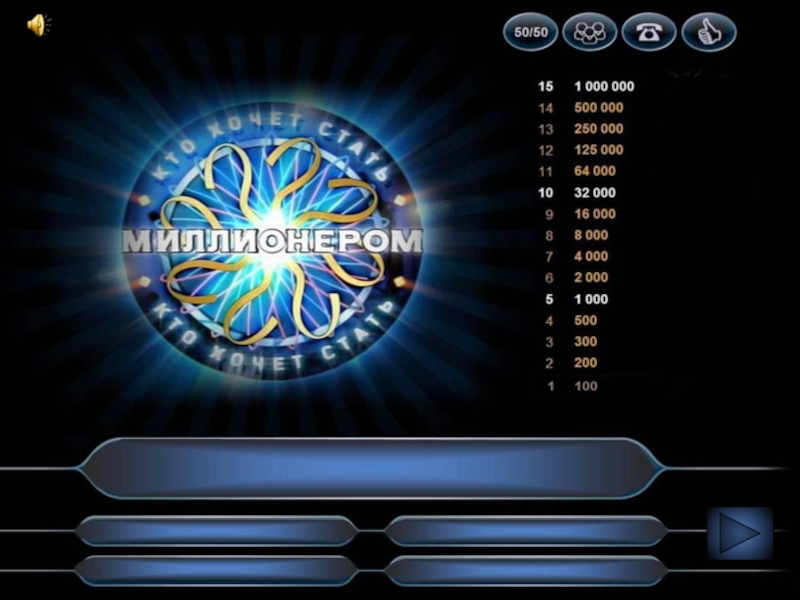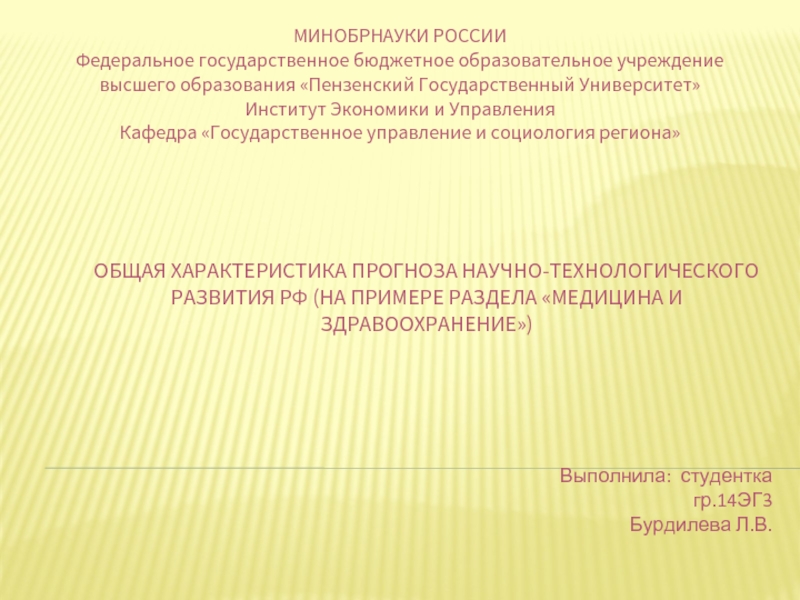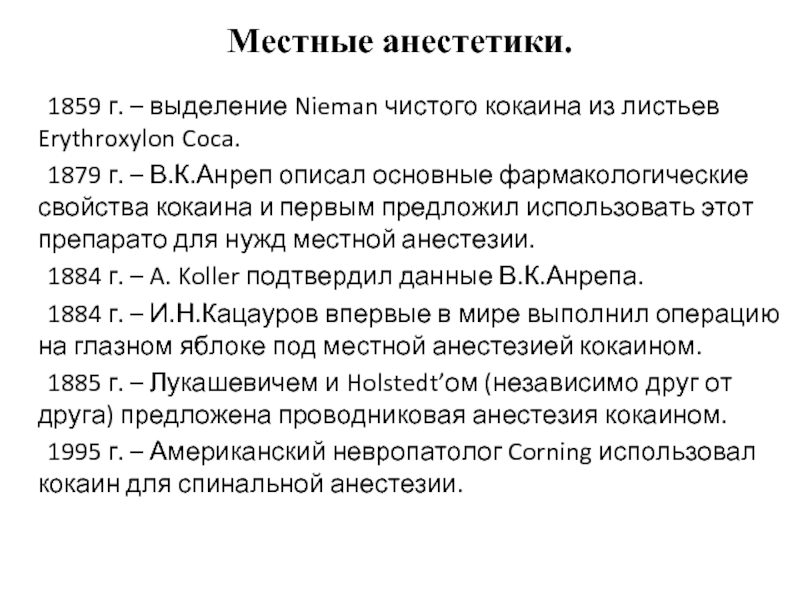- Главная
- Разное
- Дизайн
- Бизнес и предпринимательство
- Аналитика
- Образование
- Развлечения
- Красота и здоровье
- Финансы
- Государство
- Путешествия
- Спорт
- Недвижимость
- Армия
- Графика
- Культурология
- Еда и кулинария
- Лингвистика
- Английский язык
- Астрономия
- Алгебра
- Биология
- География
- Детские презентации
- Информатика
- История
- Литература
- Маркетинг
- Математика
- Медицина
- Менеджмент
- Музыка
- МХК
- Немецкий язык
- ОБЖ
- Обществознание
- Окружающий мир
- Педагогика
- Русский язык
- Технология
- Физика
- Философия
- Химия
- Шаблоны, картинки для презентаций
- Экология
- Экономика
- Юриспруденция
Peptic Ulcer Diseases презентация
Содержание
- 1. Peptic Ulcer Diseases
- 2. Definitions Ulcer: A lesion on an epithelial
- 3. Definitions Peptic Ulcer An ulcer of the
- 4. Peptic Ulcer Disease
- 5. Pathophysiology A peptic ulcer is a mucosal
- 6. Pathophysiology Two major variants in peptic ulcers
- 7. Pathophysiology DU result from increased acid load
- 8. Pathophysiology DU result from increased acid load
- 9. Pathophysiology GU results from the break down
- 10. Etiology The two most common causes
- 11. Etiology Other uncommon causes include: Gastrinoma (Gastrin
- 12. 1. Etiology – Helicobacter pylori
- 13. H.pylori Epidemiology One half of world’s population
- 14. H.pylori as a cause of PUD
- 15. H.pylori as a cause of PUD 95% 85%
- 16. Carcinogenic effect of H. pylori
- 17. Type of NSAID & Risk of Ulcer
- 18. Clinical Presentation Recurrent epigastric pain (the most
- 19. Clinical Presentation Nausea, Vomiting Dyspepsia, fatty food
- 20. Diagnosis of PUD
- 21. Peptic Ulcer Disease Diagnosis: Diagnosis of ulcer Diagnosis of H. pylori
- 22. Diagnosis of PUD In most patients
- 23. Doudenal Ulcer on Endoscopy Doudenal Ulcer Normal doudenal bulb
- 24. Gastric Ulcer on Endoscopy Chronic Gastric Ulcers
- 25. Diagnosis of H. pylori Non-invasive C13 or
- 26. Diagnosis of H. pylori Non-invasive
- 27. Diagnosis of H. pylori Non-invasive Serology
- 28. Diagnosis of H. pylori Invasive Upper GI
- 29. Diagnosis of H. pylori Invasive (endoscopy) Diagnostic:
- 30. Diagnosis of H. pylori Invasive (endoscopy) Rapid
- 31. Diagnosis of H. pylori Invasive (endoscopy) *
- 32. Diagnostic Tests for Helicobacter pylori Invasive
- 33. PUD – Complications Bleeding Perforation Gastric outlet or duodenal obstruction Chronic anemia
- 34. Complications of PUD on Endoscopy
- 35. PUD Treatment
- 36. Treatment Goals Rapid relief of symptoms
- 37. General Strategy Treat complications aggressively if
- 38. General Strategy Smoking cessation should be
- 39. Drugs Therapy H2-Receptors antagonists Proton
- 40. H. pylori Thank U ☺
Слайд 2Definitions
Ulcer:
A lesion on an epithelial surface (skin or mucous membrane) caused
by superficial loss of tissue
Erosion:
A lesion on an epithelial surface (skin or mucous membrane) caused by superficial loss of tissue, limited to the mucosa
Erosion:
A lesion on an epithelial surface (skin or mucous membrane) caused by superficial loss of tissue, limited to the mucosa
Слайд 3Definitions
Peptic Ulcer
An ulcer of the alimentary tract mucosa, usually in the
stomach or duodenum, & rarely in the lower esophagus, where the mucosa is exposed to the acid gastric secretion
It has to be deep enough to penetrate the muscularis mucosa
It has to be deep enough to penetrate the muscularis mucosa
Слайд 5Pathophysiology
A peptic ulcer is a mucosal break, 3 mm or greater
in size with depth, that can involve mainly the stomach or duodenum.
Слайд 6Pathophysiology
Two major variants in peptic ulcers are commonly encountered in the
clinical practice:
Duodenal Ulcer (DU)
Gastric Ulcer (GU)
Duodenal Ulcer (DU)
Gastric Ulcer (GU)
Слайд 7Pathophysiology
DU result from increased acid load to the duodenum due to:
Increased
acid secretion because of:
Increased parietal cell mass
Increased gastrin secretion (e.g. Zollinger-Ellison syndrome, alcohol & spicy food)
Decreased inhibition of acid secretion, possibly by H. pylori damaging somatostatin-producing cells in the antrum
Increased parietal cell mass
Increased gastrin secretion (e.g. Zollinger-Ellison syndrome, alcohol & spicy food)
Decreased inhibition of acid secretion, possibly by H. pylori damaging somatostatin-producing cells in the antrum
Слайд 8Pathophysiology
DU result from increased acid load to the duodenum due to:
Smoking
impairing gastric mucosal healing
Genetic susceptibility may play a role (more in blood gp. O)
HCO3 secretion is decreased in the duodenum by H. pylori inflammation
Genetic susceptibility may play a role (more in blood gp. O)
HCO3 secretion is decreased in the duodenum by H. pylori inflammation
Слайд 9Pathophysiology
GU results from the break down of gastric mucosa:
Associated with gastritis
affecting the body & the antrum
The local epithelial damage occurs because of cytokines released from H. pylori & because of abnormal mucus production
Parietal cell damage occur so that acid production is normal or low
The local epithelial damage occurs because of cytokines released from H. pylori & because of abnormal mucus production
Parietal cell damage occur so that acid production is normal or low
Слайд 10Etiology
The two most common causes of PUD are:
Helicobacter pylori infection
( 70-80%)
Non-steroidal anti-inflammatory drugs (NSAIDS)
Non-steroidal anti-inflammatory drugs (NSAIDS)
Слайд 11Etiology
Other uncommon causes include:
Gastrinoma (Gastrin secreting tumor)
Stress ulceration (trauma, burns, critical
illness)
Viral infections
Vascular insufficiency
Viral infections
Vascular insufficiency
Слайд 13H.pylori Epidemiology
One half of world’s population has H.pylori infection, with an
estimated prevalence of 80-90 % in the developing world
The annual incidence of new H. pylori infections in industrialized countries is 0.5% of the susceptible population compared with ≥ 3% in developing countries
The annual incidence of new H. pylori infections in industrialized countries is 0.5% of the susceptible population compared with ≥ 3% in developing countries
Слайд 16Carcinogenic effect of H. pylori
H. pylori
Host Factors
Other environmental
Factors
Antral
gastritis
Pangastritis
DU
GU
Gastritis Cancer
Слайд 18Clinical Presentation
Recurrent epigastric pain (the most common symptom)
Burning
Occurs 1-3 hours after
meals
Relieved by food → DU
Precipitated by food → GU
Relieved by antacids
Radiate to back (consider penetration)
Pain may be absent or less characteristic in one-third of patients especially in elderly patients on NSAIDs
Relieved by food → DU
Precipitated by food → GU
Relieved by antacids
Radiate to back (consider penetration)
Pain may be absent or less characteristic in one-third of patients especially in elderly patients on NSAIDs
Слайд 19Clinical Presentation
Nausea, Vomiting
Dyspepsia, fatty food intolerance
Chest discomfort
Anorexia, weight loss especially in
GU
Hematemesis or melena resulting from gastrointestinal bleeding
Hematemesis or melena resulting from gastrointestinal bleeding
Слайд 22Diagnosis of PUD
In most patients routine laboratory tests are usually
unhelpful
Diagnosis of PUD depends mainly on endoscopic and radiographic confirmation
Слайд 25Diagnosis of H. pylori
Non-invasive
C13 or C14 Urea Breath Test
Stool antigen test
H.
pylori IgG titer (serology)
Invasive
Gastric mucosal biopsy
Rapid Urease test
Invasive
Gastric mucosal biopsy
Rapid Urease test
Слайд 26Diagnosis of H. pylori
Non-invasive
1. C13 or C14 Urea
Breath Test
The best test for the detection
of an active infection
Слайд 27Diagnosis of H. pylori
Non-invasive
Serology for H pylori
Serum Antibodies (IgG) to
H pylori (Not for active infection)
Fecal antigen testing (Test for active HP)
Fecal antigen testing (Test for active HP)
Слайд 28Diagnosis of H. pylori
Invasive
Upper GI endoscopy
Highly sensitive test
Patient needs sedation
Has both
diagnostic & therapeutic role
Слайд 29Diagnosis of H. pylori
Invasive (endoscopy)
Diagnostic:
Detect the site and the size of
the ulcer, even small and superficial ulcer can be detected
Detect source of bleeding
Biopsies can be taken for rapid urease test, histopathology & culture
Detect source of bleeding
Biopsies can be taken for rapid urease test, histopathology & culture
Слайд 30Diagnosis of H. pylori
Invasive (endoscopy)
Rapid urease test ( RUT)
Considered the endoscopic
diagnostic test of choice
Gastric biopsy specimens are placed in the rapid urease test kit. If H pylori are present, bacterial urease converts urea to ammonia, which changes pH and produces a COLOR change
Gastric biopsy specimens are placed in the rapid urease test kit. If H pylori are present, bacterial urease converts urea to ammonia, which changes pH and produces a COLOR change
Слайд 31Diagnosis of H. pylori
Invasive (endoscopy)
* Histopathology
Done if the rapid urease test
result is negative
* Culture
Used in research studies and is not available routinely for clinical use
* Culture
Used in research studies and is not available routinely for clinical use
Слайд 36Treatment Goals
Rapid relief of symptoms
Healing of ulcer
Preventing ulcer recurrences
Reducing ulcer-related
complications
Reduce the morbidity (including the need for endoscopic therapy or surgery)
Reduce the mortality
Reduce the morbidity (including the need for endoscopic therapy or surgery)
Reduce the mortality
Слайд 37General Strategy
Treat complications aggressively if present
Determine the etiology of ulcer
Discontinue
NSAID use if possible
Eradicate H. pylori infection if present or strongly suspected, even if other risk factors (e.g., NSAID use) are also present;
Use antisecretory therapy to heal the ulcer if H. pylori infection is not present
Eradicate H. pylori infection if present or strongly suspected, even if other risk factors (e.g., NSAID use) are also present;
Use antisecretory therapy to heal the ulcer if H. pylori infection is not present
Слайд 38General Strategy
Smoking cessation should be encouraged
If DU is diagnosed by
endoscopy, RU testing of endoscopically obtained gastric biopsy sample, with or without histologic examination should establish presence or absence of H. pylori
If DU is diagnosed by x-ray , then a serologic , UBT, or fecal antigen test to diagnose H. pylori infection is recommended before treating the patient for H. pylori
If DU is diagnosed by x-ray , then a serologic , UBT, or fecal antigen test to diagnose H. pylori infection is recommended before treating the patient for H. pylori
Слайд 39Drugs Therapy
H2-Receptors antagonists
Proton pump inhibitors
Cyto-protective agents
Prostaglandin agonists
Antacids
Antibiotics for
H. pylori eradication
